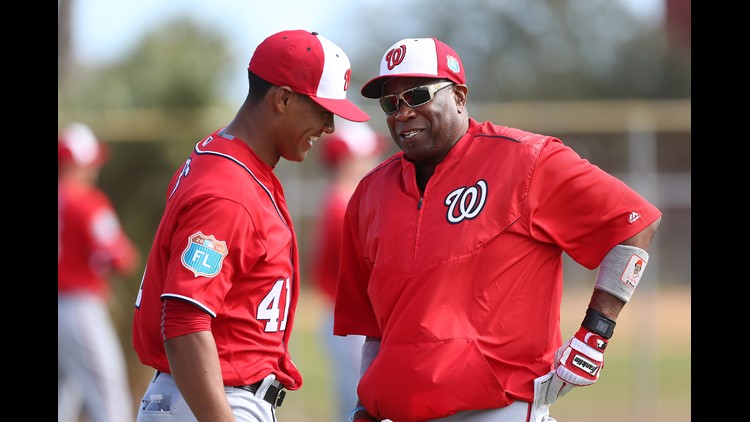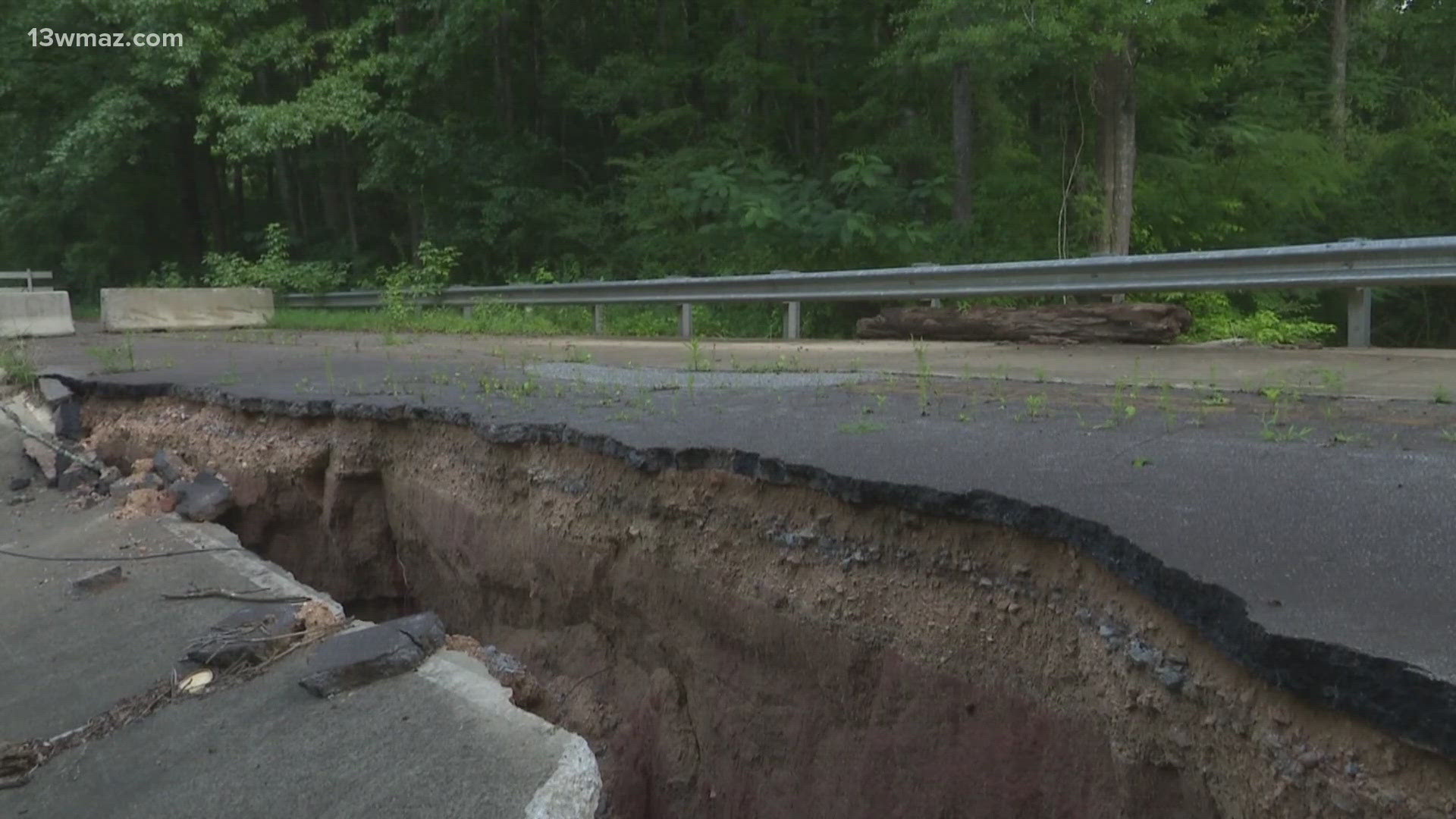Major League Baseball celebrates the 69th anniversary Friday of Jackie Robinson breaking the color barrier, and while the number of African-American players on teams remain near historic low levels, there’s an alarming trend that mystifies the industry.
![USP MLB: WASHINGTON NATIONALS-WORKOUTS S [BBA OR BBN] USA FL [image : 83053150]](http://www.gannett-cdn.com/-mm-/81f6d497d2443153b74e8646e6a1a99a49f85388/c=589-0-4182-3071/local/-/media/2016/04/14/USATODAY/USATODAY/635962591184931947-c01-dusty-0303.jpg)
While the African-American population in baseball remains flat at just 8%, according to an examination of opening-day rosters conducted by USA TODAY Sports, the scarcity of black pitchers is staggering.It’s the dearth of African-American pitchers.
Of the 449 pitchers on major league opening-day rosters and the disabled list this year, just 14 were African American.
Fourteen!
Seven starters. Seven relievers.
No team has more than one black pitcher on its major league staff, and four of those starters reside in the American League East: CC Sabathia of the New York Yankees, David Price of the Boston Red Sox, Chris Archer of the Tampa Bay Rays and Marcus Stroman of the Toronto Blue Jays.
Remarkably, there is not a single African-American pitcher in the AL Central , and only one - San Diego Padres starter Tyson Ross - in the National League West.
![Gannett-cdn [oembed : 83063476] [oembed : 83063476] [oembed : 83063476] [oembed : 83063476] [oembed : 83063476] [oembed : 83063476]](/Portals/_default/Skins/PrestoLegacy/CommonCss/images/smartembed.png)
Granted, there are 19 clubs who opened the season with two or fewer African-Americans on their entire team. The Atlanta Braves, Los Angeles Angels and Colorado Rockies are playing without a single black player.
Considering the increased emphasis on pitching depth in baseball - with every team employing 12 or 13 pitchers on their 25-man roster when 10 or 11 used to suffice - it’s clear that Major League Baseball’s efforts to diversify the makeup of American-born players will hit a ceiling without a resurgence in the number of black pitchers.
African Americans comprise just 1.6% of major league pitchers - well below their 7.9% of the general player population. Forty-two of 69 African American major leaguers - 61% - are outfielders. And when teams opt to carry a 12th or 13th pitcher on their roster, it often comes at the expense of an extra outfielder.
So the cruel reality is that the African-American baseball player - whether prodded to abandon pitching or by their own volition - is being excluded from more than half the jobs in the industry.
Anecdotally, the immediate future doesn’t look much more promising. The top 100 minor league prospects, according to rankings by MLB.com, include just four African-American pitchers - Dillon Tate, Amir Garrett, Touki Toussaint and Justus Sheffield.
And of the top 50 projected players in this year’s upcoming draft, Reggie Lawson of Victorville, Calif., Alex Speas of Powder Springs, Georgia, and Jordan Sheffield of Vanderbilt are the only African-American pitchers.
Oh, where have you gone, Bob Gibson?
“When you think about it, the black pitchers have almost become extinct,” says Arizona Diamondbacks GM Dave Stewart, one of only 15 black pitchers to win 20 games in a season. “There are a lot of reasons, I don’t know if any of them are valid, but it seems like a lot of teams take black pitchers and convert them to infielders or outfielders.
“I know it happened a lot in the past, so maybe it’s still happening.’’
Certainly, it’s possible ingrained patterns of stereotyping remain. Major league rosters are filled with failed position players turned pitchers - St. Louis’ Trevor Rosenthal, Oakland’s Sean Doolittle, Colorado’s Jason Motte, the Los Angeles Dodgers’ Chris Hatcher and Kenley Jansen among the current crop - but rarely are they black. The only current African-American pitchers who were converted position players are Edwin Jackson of the Miami Marlins and Mychal Givens of the Baltimore Orioles.
Rare, too, is the finesse African-American pitcher. Of the 50 softest-throwing starting pitchers in 2015 based on average fastball velocity, only 35-year-old Sabathia - who eight years ago struck out 251 batters - and his diminished 90-mph heater make the list.
![Bryce Harper crushes a mammoth grand slam for his 100th career homer [oembed : 83053478] [oembed : 83053478] [oembed : 83053478] [oembed : 83053478] [oembed : 83053478] [oembed : 83053478] [oembed : 83053478] [oembed : 83053478]](/Portals/_default/Skins/PrestoLegacy/CommonCss/images/smartembed.png)
That only reinforces Stewart’s anecdotal observation that if a pitcher isn’t throwing in the 90s, he’s out of the game.
“There’s a certain criteria for black players,’’ Washington Nationals manager Dusty Baker said, “and one of those is you can’t be a soft tosser. We were always taught you can’t be a slow runner unless you hit a lot of home runs. And you couldn’t be a utility player because those jobs are for the white guys.
“The reason you don’t see a black player converted into being a pitchers is because teams don’t have money invested in them. Most of the white pitchers being converted, you have money invested in them.’’
Perhaps it goes even deeper, says Bob Kendrick, president of the Negro Leagues Baseball Museum, who traces the scarcity of black pitchers to the integration of baseball in 1947. It’s similar with the catching position, with Canadian-born Russell Martin of the Toronto Blue Jays the lone black catcher. The last African-American everyday catcher was Charles Johnson, and he retired 11 years ago.
“Historically, pitchers and catchers did not transition from the Negro Leagues,’’ Kendrick said. “There were great arms in the Negro Leagues, and we had great catchers from Josh Gibson to Roy Campanella, but that was considered a cerebral position. And the general consensus back then was that these men weren’t smart enough to play in the major leagues.
“We know that the Negro Leagues actually had more college-educated men than major leagues then, but that was the misnomer. So outside Don Newcombe and a handful of other guys, they never really got an opportunity to pitch. The problem, too, (Negro Leagues manager) Buck O’Neil used to tell me, was how difficult it was for the black pitcher in the major leagues.
“Dan Bankhead was the first African-American pitcher in history, and he had electric stuff. But Bankhead was from a very small town in Alabama (Empire), and Buck always believed that Bankhead was scared to throw inside. He was scared what might happen if he hit a white guy.
“So after the Negro Leagues ended, there was no place to groom and train African-American pitchers, and the pitching aspect started to really diminish.’’
The evidence is reflected in Cooperstown, N.Y.
There are 10 black pitchers who have been inducted into Baseball’s Hall of Fame, but eight of those are from the Negro Leagues. The other two are Gibson, inducted in 1981, and Canadian native Ferguson Jenkins 10 years later.
In the 25 years since, Stewart and closer Lee Smith are the only African-American pitchers to receive more than 5% of the vote and last more than one year on the Hall of Fame ballot. Stewart is no longer eligible, and Smith has one year left.
“I can’t explain it,’’ Jenkins said, “but it’s an art form that you have to work at. A lot of guys get disappointed early because they don’t win, and give up on it. Nobody’s going to give you an easy way to earn a living.’’
Stewart, an All-America catcher in high school, said his preference was to actually stay behind the plate. Yet, it took 15 minutes for the Dodgers to tell him his catching days were over when they selected him in the 16th round of the 1975 draft.
“Black kids want to be in the game every day,’’ Stewart said. “They want to be everyday players. Sometimes when you pitch, you don’t feel like you’re really playing since it’s just one time a week.’’
Perhaps it’s simply a case, said Tampa Bay Rays ace Chris Archer, of parents not wanting their kids growing up to be pitchers.
“People don’t really view athleticism transcending onto the pitchers’ mound,’’ Archer said, “as you would an outfielder or a shortstop. You just don’t think of it as an athletic thing to do. It’s really the last choice of the parents.”
Perhaps this wave of young African-American pitching, at an average age of 27, will continue to flourish, encouraging young players to step onto the mound. The African-American population, overall, could be on the rise, too. There were 17 African-American players selected the first day of the draft last summer, including the highest percentage of first-round picks since 1992. This year, eight of the top 50 projected picks are African-American.
“We obviously try to cultivate the players at the positions they are playing,’’ said Del Matthews, senior director of MLB player development, “but any time a player shows promise at a skill position, we will do everything we can to harness the talent at that position.’’
Perhaps one day, that talent will be on the mound, too, assuring that the African-American pitching population doesn’t become only a memory.
“Maybe it doesn’t seem cool or exciting standing on the mound and throwing,’’ Archer said, “but it is. Really, it is.
“Hopefully, this group of us, I know it’s small, can make a big difference.’’



![Jackie Robinson Day 2016 [gallery : 83107038]](http://www.gannett-cdn.com/-mm-/4f4eb5b02ef3b97b91ddbba825ee515bbc6d7629/c=710-677-2221-1969/local/-/media/2016/04/15/USATODAY/USATODAY/635963512841881807-USP-MLB-BALTIMORE-ORIOLES-AT-TEXAS-RANGERS-81247613.JPG)
